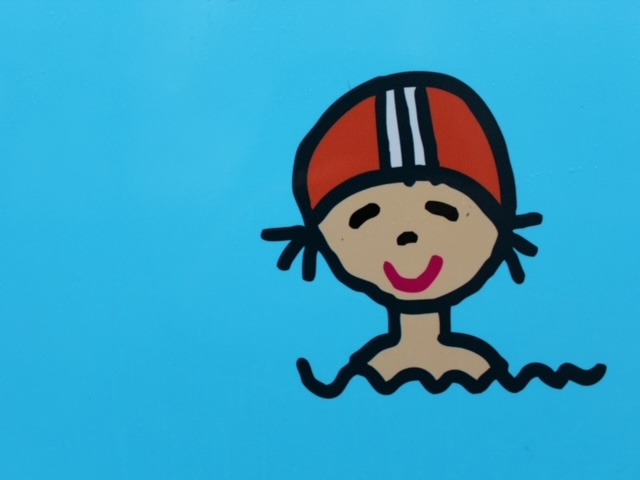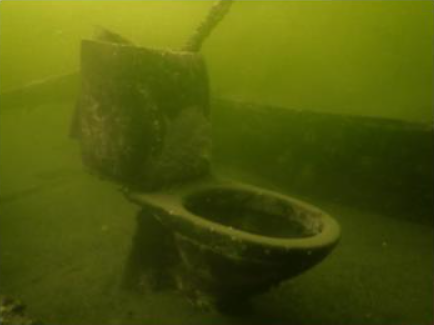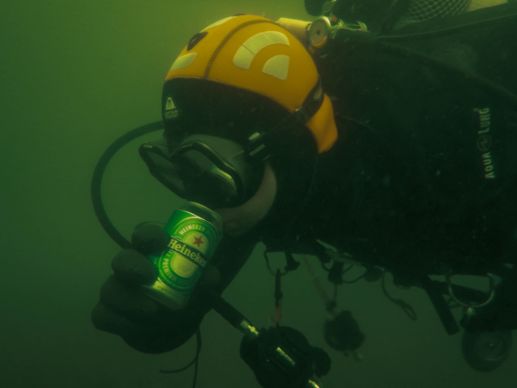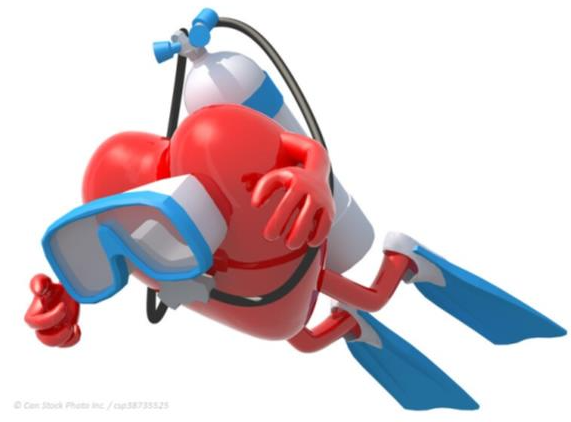(Medical) questions
Every now and then there is a (medical) question that everyone wants an answer to. We will post these below.
Do you have a question? Ask us via the contact form.
Do you have a question? Ask us via the contact form.
Scuba Diving with Children
Author: Franka Appelman
Created: 18 January 2021
 There has been a lot of discussion about diving with children for many years. There are fierce opponents who believe that diving with children should not be done; in addition, there are proponents of taking children into the water at a very young age. Children come into contact with diving. On the one hand through their diving parents; nice to go to the diving club together. In addition, children are also made enthusiastic to go diving at schools; I myself also helped as a volunteer to get more awareness for diving through school sports..
There has been a lot of discussion about diving with children for many years. There are fierce opponents who believe that diving with children should not be done; in addition, there are proponents of taking children into the water at a very young age. Children come into contact with diving. On the one hand through their diving parents; nice to go to the diving club together. In addition, children are also made enthusiastic to go diving at schools; I myself also helped as a volunteer to get more awareness for diving through school sports..
The age limits for diving are different at the different diving organisations (eg WOSD, NOB, PADI, SSI, IADS, IAHD). If you put these age limits side by side, there are already children's programs to learn how to snorkel and dive in the pool from the age of 8 in a playful way. From the age of 12, courses are also offered for a junior open water license, which is converted to an adult license at the age of 14/15. In addition, there are depth limits of 12 meters for junior certifications..
The Dutch Association for Diving Medicine (Nederlandse Vereniging voor Duikgeneeskunde - NVD) has recently (December 2020) adjusted its position on children and diving, giving advice per age category.
Children react differently underwater than adults. Both on a physical and mental level. Below is a list of points that must be taken into account when diving with children.
Equalisation
The equalisation of the ears goes through the Eustachian tube, which runs from the pharynx to the middle ear. In children, this tube runs more horizontally than in adults and is narrower. This makes equalising more difficult in children. This is also the reason why children more often have an ear infection that requires tubes to be placed. As you get older (and bigger), the Eustachian tube will have a more vertical course, making equalization easier.
Lungs
The amount of alveoli develop up to the 9th year of life. At that time, the airways are still relatively narrow and less elastic, making breathing more difficult. It is not until the age of 15 that the lungs are fully grown and function at the level of an adult. This is also the reason that people at a younger age more often have asthma, which they 'grow out of'. Potentially, therefore, children have a higher risk of getting barotrauma of the lungs. Children with asthma are advised against diving. This is in contrast to adults, who are allowed to dive with good medication for their asthma.
Physique
In children, the bones are not yet fully grown. Long bones contain growth plates, which form new bone under the influence of growth hormone, so that growth takes place. Theoretically, nitrogen bubbles (created during diving) can damage the growth plates, so that growth can no longer take place. In practice, this has not yet been investigated.
Since children are not yet fully grown, it is advised to limit the weight load. Diving equipment in the pool quickly weighs 15 kg. It is advised to put on the diving equipment only in the water.
Since a child's physique is different from adults with a relatively narrow pelvis, a weight belt can easily slip off. That is why it is wise to use BCDs with integrated weights.
Temperature
Compared to adults, children have a relatively larger body surface in relation to their body volume. As a result, they will cool faster in water. This can also play a role in the swimming pool! The water temperature is lower than the body temperature of 37 degrees, so cooling is imminent. You can take this into account by having children (also in the swimming pool) wear a wetsuit. Make sure that the wetsuit fits well and is not bought 'on growth'. In addition, the dive duration can be adjusted.
Mental development
Every child develops differently. One 12-year-old child is much wiser than another 12-year-old child. Therefore, it must be individually assessed whether the child is suitable for diving. It is important here that the motivation to dive must come from the child himself, and not because the parent likes it.
To be able to dive responsibly, knowledge of a number of basic things in diving physiology is necessary. The child must have some understanding for this. For example, the child must understand that during an ascent it is necessary that you continue to exhale to prevent a lung rupture.
Children are very impulsive and can lose sight of safety. Due to his impulsiveness, the child can assess dangers differently than adults. When diving, these impulses must be suppressed. As an example: a child swims after a fish in his enthusiasm and loses his buddy in the process.
In addition, the question is how and whether a child knows how to act in a diving accident as learned. Can a child be expected to adequately help his adult buddy in an accident situation? Apart from the fact that his buddy can be his father/mother, it is doubtful whether the child can continue to think clearly in an emergency situation. In fact, the buddy is always at risk. That is why the advice is always to use a three-buddy system with a child.
In a preventive diving medical examination [diving examination] it is only possible to assess to a limited extent whether the mental development of a child is sufficient to be able to dive safely. The diving instructor has an important role in this.
In conclusion, in my opinion diving with children should be safe if the dive duration, depth limit, properly fitting diving equipment, the right motivation and mental maturity of the child are taken into account and a 3rd buddy is always involved in the dive.
BUSINESS INFORMATION
WOSD COURSES






